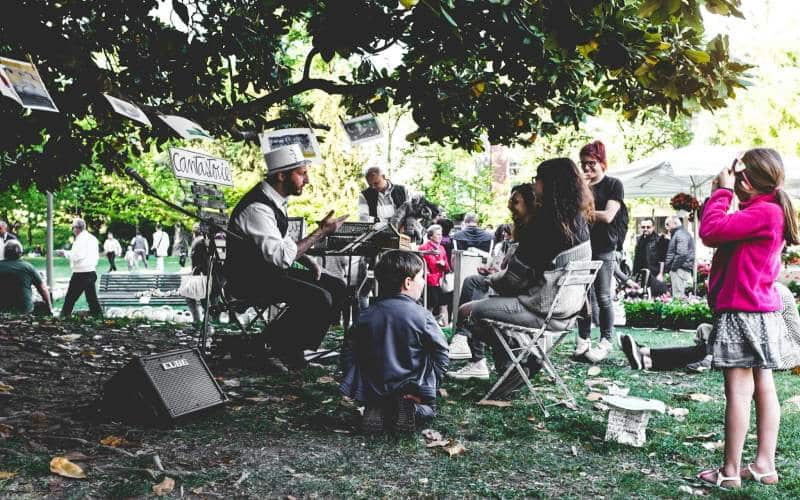Since the earliest times storytelling has been a key tradition of human culture. This is because stories are a very effective way of sharing beliefs, values, and traditions between generations. The art of storytelling proves to be an invaluable tool in the field of religious education. Through listening to stories, students are able to gain spiritual wisdom, develop a sense of faith, and grasp the profound teachings of religion. This article aims to delve into the wide-ranging role of storytelling in religious education, exploring the profound influence stories have on individuals of different ages.
Storytelling paves the way for people to get in touch with their ethnic backgrounds and roots
Story narration makes it possible for a person to participate in the religion to which they belong and embrace their cultural background. Stories passed on from one generation to another provide learners with an understanding of the very basis of their faith, the lives of respected heroes, and the core ethical ideas that form the basis of their religious communities. If you do not have a connection with tradition and heritage, and you find it hard to write your religious essay about it, you can try our religion essay writing service. Remember that storytelling is a way of preserving and transmitting an eclectic religious heritage from one age to the next.
It demonstrates the moral and ethical values
Many religious sermons will contain valuable lessons on morality and ethics that help believers overcome the obstacles that they face in their day-to-day lives. Illustrating abstract concepts like compassion, forgiveness, humility, and justice through stories will make it easier for teachers to communicate them to students in a way that can be recalled vividly and leave a deep impression. Through the parables of Jesus, Jataka Tales in Buddhism, and the fables of Aesop, storytelling enables learners to understand moral lessons in action, for which they pay attention and reflect on them to grow morally.
Storytelling involves tapping into individuals’ imagination and emotions and evokes a response
Storytelling stands out among all other teaching methods because of its amazing capacity to capture the imagination and bring forth emotional reactions, thus making the process of religious instruction fun and transforming at the same time. By means of intense imagery, convincing characters, and stirring plots, the narratives help students to jump into the domain of the sacred, that is, to be able to feel empathy with the protagonists and the hurdles they have gone through.
It helps stimulate spiritual reflection and questioning
Religious education storytelling is not only about information passing and giving moral instructions. It also invites students to be active in a spiritual quest and reflection. Through the exploration of the deeper meaning of religious stories, people are encouraged to dig deeper into their inner selves and ask some of the most significant questions about the reason for being, existence, and life’s purpose or the connection between humans and God.
That is why, when teachers engage students through open discussions, critical thinking assignments, and personal reflections, they create an interactive environment where the faith of the learners becomes the starting point in exploring religion, thinking through theological concepts, and looking for the meaning and purpose in their spiritual quest.
Storytelling unites and creates a sense of shared identity
Telling stories is one of the many tools that foster the unity of a community and reveal a shared identity to those who have faith. Through telling stories about faith, rituals, and shared experiences, the religious communities are able to establish a sense of belonging and togetherness that eliminates individual differences and creates an atmosphere for mutual help and solidarity. Whether during a religious event, a festival, or a personal testimony, storytelling creates that bond of shared history and heritage that is the social fabric of religious communities.
Storytelling helps students in personal transformation
The art of storytelling in religious education is extraordinary, as it has the ability to drive inner change and religious evolution. When learners immerse themselves in sacred narratives, struggle with ethical issues, and search for meaning, they embark on a path of self-awareness and inner enrichment. Contrastingly, individuals undergo spontaneous conscious shifts, insights, and revelations, and have epiphany moments. These are resulting in significant changes in belief systems, values, and behaviors.
Whether this is Saul’s conversion on the road to Damascus, Gautama Buddha’s spiritual awakening under the Bodhi tree, or the spiritual enlightenment of Sufi mystics, storytelling facilitates instances of tremendous spiritual awakening and empowerment with the potential to impact people’s lives in a measurable way.
You should now understand how stories influence the religious education process
Religious education would not be complete without storytelling, which occupies a crucial place in the arsenal of spiritual wisdom and faith-nurturing tools, as well as in the development of personal growth. Through the use of storytelling, educators can connect students of all ages to their religious backgrounds, moral values, and shared sense of existence by giving them the power to live more meaningful, purposeful, and compassionate lives.

